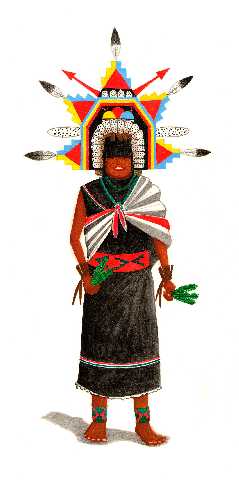 Another Stereotype of the Month entry:
Another Stereotype of the Month entry:
 Another Stereotype of the Month entry:
Another Stereotype of the Month entry:
Dance of the Butterfly Ornament Subscription Plan
Tiffany Design Unites with Native American Style Legend to Create Unforgettable Collectible Ornaments -- Butterfly Dancers!
Let your spirits be lifted by this Native-American style legend -- when the Butterfly sheds her caterpillar skin life begins anew, and if you tell her a secret wish, she will deliver it up through the heavens to the Great Spirit! Now you can tell your wishes to these butterfly collectible ornaments -- each is actually a beautiful Native American style "butterfly dancer," with transparent wings hand-painted in the glowing style of Louis Comfort Tiffany designs!
The delicate stained glass designs and inspirational theme of these exclusive Ashton-Drake collectible ornaments makes each a jewel-like treasure you'll want to display all year long -- order now!
Rob's comment
A couple problems with these "butterfly dancers":
First is the Indian maidens and their implicit sexuality. True, they aren't buxom or voluptuous, but the sexual signs are there. The long hair, the waist-accentuating belts, the slit skirts, the bare arms and legs all suggest someone who's sexually appealing.
The bare feet are especially indicative. Note that each maiden wears an inauthentic ankle bracelet to draw your eyes to her feet. From there your eyes are supposed to wander up her naked calf to the slit in her skirt to, well, you know.

I'm not sure Indians went barefoot more than anybody else who lives outdoors. Most often they wore moccasins or other kinds of shoes. You know, to protect their feet from hot sand, rocks, mud, twigs, thorns, ants, and other icky things found outdoors?
Depicting the maidens barefoot implies they're less restrained or civilized than other people, closer to being wild and free. In other words, closer to being sexual creatures, like uncontrollable animals. In fact, most animals have padded or furry paws or hooves, so even they don't go around barefoot.
Second is the notion of Indians as butterflies or winged sprites. Depicting them as Tinkerbell wannabes, as fairies, implies they're exotic, fantastic, otherworldly. It groups them with other mythical creatures: leprechauns, mermaids, vampires, ghosts.
This is the problem with Peter Pan, which does commingle Indians with fairies and mermaids as well as pirates. It's similar to the problem of treating Indians as shamans, wizards, and other mystical figures. It's related to the problem of treating Indians as mascots—as lucky charms or talismans who will bring victory just by invoking their names.
If you think of Indians as magical beings from another time and place, you won't take them seriously as real people with real problems. How concerned can you be about someone who can change into a butterfly and whisper in the Great Spirit's ear? Is this someone who needs your help to adjudicate state-tax conflicts, reform trust-fund accounting, or increase the BIA's budget? Probably not.
A real butterfly dancer
To give you an idea how far the "butterfly dancers" are from reality, consider the accompanying drawing. It's a Hopi polimana, or butterfly maiden. I won't begin to try explaining her religious significance, but she participates in Butterfly Dances to (I think) communicate some sort of message to the gods.
In that sense she's analogous to the Ashton-Drake ornamnents. The big difference is her appearance. Her dress is colorful but demure. The focus is on her headdress (tableau), not her body or skin. Each part of her outfit has a meaning; it doesn't exist just to accentuate her beauty.
This is what a real butterfly dancer looks like. Except for being female, she has little or nothing in common with the Ashton-Drake ornaments. One is a human being with unique hopes and fears; the other is a bundle of stereotypes.
Related links
Indian women as sex objects
|
. . . |

|
All material © copyright its original owners, except where noted.
Original text and pictures © copyright 2007 by Robert Schmidt.
Copyrighted material is posted under the Fair Use provision of the Copyright Act,
which allows copying for nonprofit educational uses including criticism and commentary.
Comments sent to the publisher become the property of Blue Corn Comics
and may be used in other postings without permission.